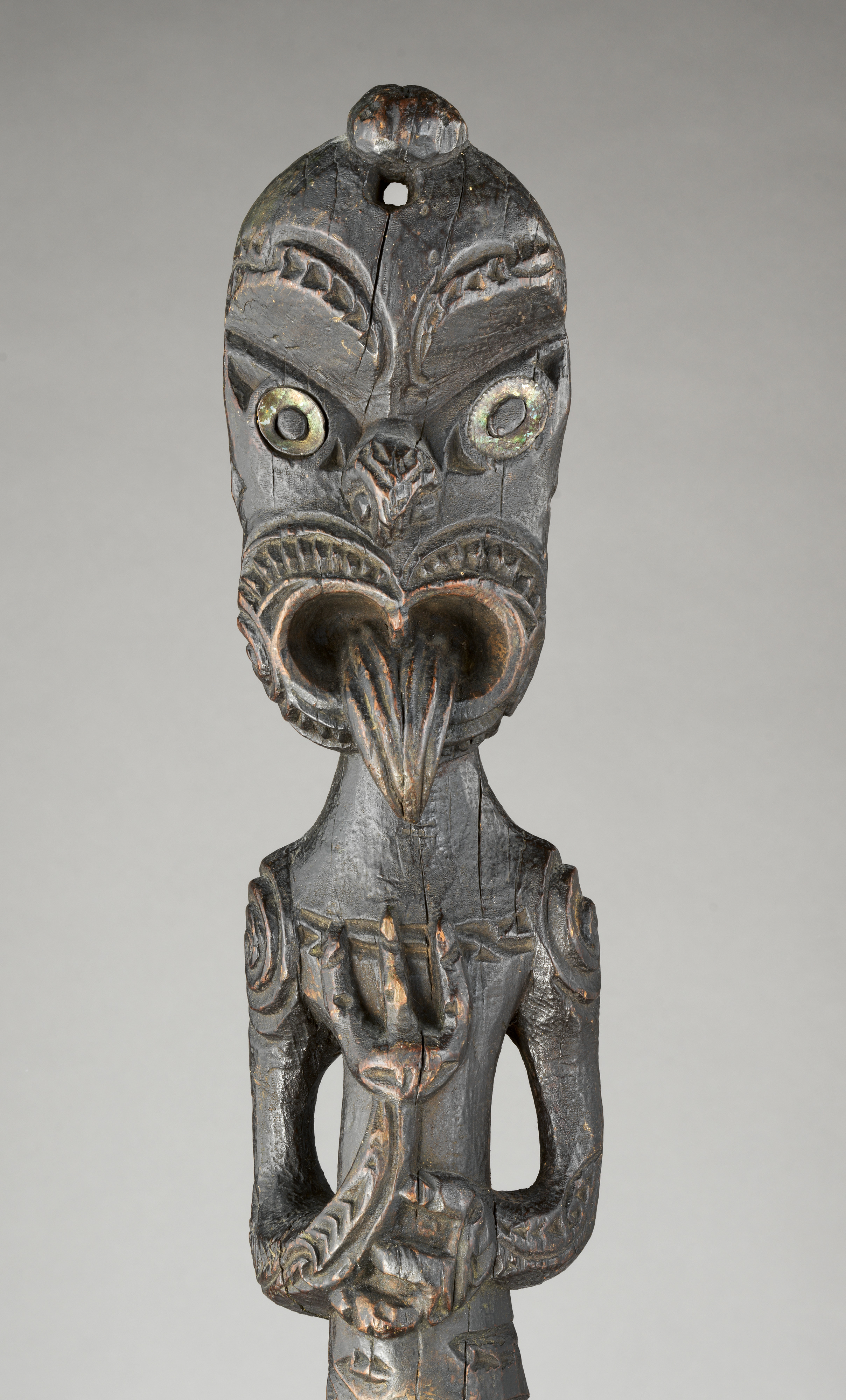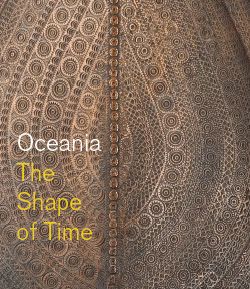Tekoteko (gable figure)
Not on view
This carved gable figure is remarkable for its virtuosity and technical accomplishment. An outstanding example of Māori figural sculpture, the carving references the early ancestral union of male and female expressed as a first generation of bird-like ancestor beings, standing defiant in their role as protective guardian spirits (kaitiaki) for the community. Placed high at the front apex of a ceremonial house or store (pātaka), these figures represent the foundation of the community, a highly visible embodiment of powerful genealogical principles that ensure the ongoing vitality of the tribal group (iwi, hapu) and the future lives of its descendants, a signal of its spiritual wealth and political authority. The ‘extra’-ordinary aspect of this pair of ancestral figures is emphasized by their expressive and supple bodies, the slender, tapering of their fingers, and bird-like webbed feet, which affirm their direct descent from the earliest bird-like primordial ancestors. Their distinctive, incised facial and bodily tattoo markings (tā moko) indicate their high status and chiefly lineage. The figures provide a strong visual reference to beings who evolved during the time of creation, when the sacred night (te po) was pierced with the first light of creation (te ao marama) when the creative forces of the universe were at their most dynamic. This powerful creativity is referenced in the pairing of the male and female figures such as these whose union was celebrated and underscored by positioning them prominently at the apex of the ceremonial house or store where they could be seen from afar. The rich black patina of the wood in this carving is the result of steeping the carving in paru (a special-grade black mud steeped in iron) which has contributed to its preservation. Shell insets, dropped into the eyes of each figure, provided scintillating flash points in contrast to the dark background of each sculptural piece, challenging those who dared approach these chiefly ceremonial spaces which were the sacred domain of chiefs and the focal point of 18th-century Māori tribal communities.
Due to rights restrictions, this image cannot be enlarged, viewed at full screen, or downloaded.
This artwork is meant to be viewed from right to left. Scroll left to view more.





